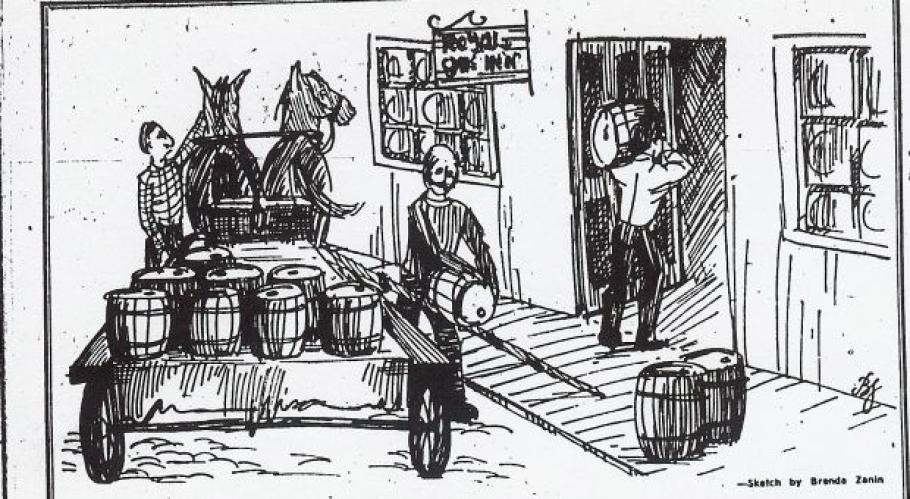
By Hollie Pratt-Campbell
It may seem hard to imagine today, but Morton’s Brewery was one of seven brewery/distilleries located in Kingston throughout the 19th century, and as many as four operated concurrently at various points. Though perhaps this isn’t so surprising when one considers that in 1840, Kingston had a total of 132 licensed taverns, and many more that were unlicensed, serving a population of 8,000. Even professional buildings like Kingston City Hall contained taverns to ensure a frothy fix was never far away for politicians and public servants.
To our eyes viewing back through the message of the temperance, yes, it was basically a culture of alcoholism that extended throughout North America and Western Europe; most descriptions from the time confirm that drunken people could be found everywhere in the 19th century, at any time of day and at all levels of society. And in the mid-1800s, one of Kingston’s primary purposes was to keep a thirsty colony supplied with beer and whiskey. Not only were large quantities of booze produced in the Limestone City, but it also received shipments of alcohol and other goods from overseas in order to distribute throughout the region.
Kingston was a ‘whiskey depot’, of sorts, set up as the industrial centre as opposed to Toronto because it was more protected from the Americans. But by the 1850s, the building of the railway in Ontario gave other, larger municipalities the opportunity to catch up. By 1870, Kingston was no longer considered a major player in the industry. Railway sales allowed breweries like Labatt and Carling in London, as well as those in Hamilton, to get their goods to markets and compete with local brewers existing on shorelines still depending on sail. Along with the expansion of the railway, a major cultural shift occurred when the temperance movement of the 1800s started to influence more people; by the end of the century, people had begun drinking in what we today view as moderation.
Still, evidence of the way things were still exists today, and perhaps more so in Kingston than in most other North American cities. Kingston still has a handful pre-Confederation taverns, for instance, as well as several malting towers and ancillary buildings. All of this architecture connects the city of today with its brewing past. The new malting tower being built as part of the Tett Centre for Creativity and Learning is thus a very fitting tribute to the past life of the site. Not only does it connect the new building with other downtown landmarks, but it also physically represents one of the high points of Kingston’s role within the whole colony during the mid-Victorian era.
To learn more about the Tett, join us on a Tett Tour!

